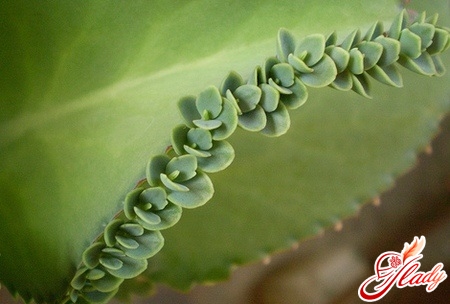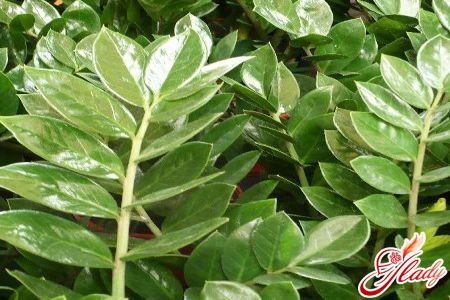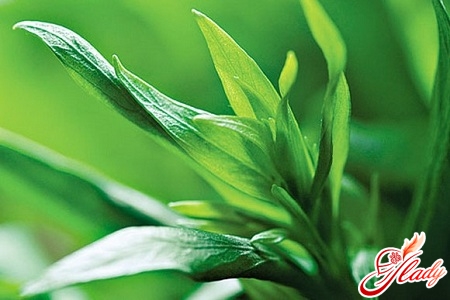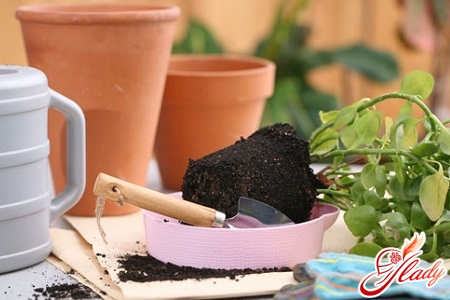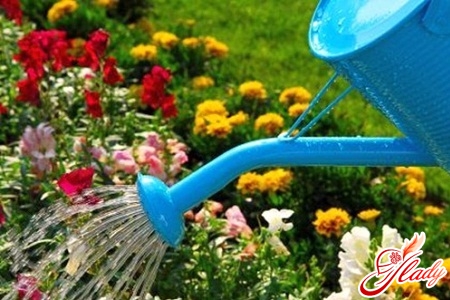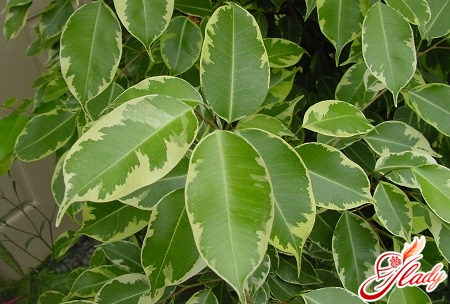 Among the room brothers of the family of mulberry ficusBenjamin - one of the most common representatives of trees and shrubs of the Ficus genus. In the natural environment (India, China) it reaches twenty-five meters, domesticated varieties under favorable conditions can grow to two or three meters. The main advantage of this evergreen tree is its wide crown with a lot of glossy-green or variegated leaves. And therefore the main sign of most of the ailments that the ficus are after will be the state of its foliage. And if the conditions of the content will not suit your plant, then in the first place the ficus will react by dropping its lush crown. Immediately I want to warn beginning flower growers - almost all diseases are associated with improper maintenance and care for the ficus. In detail about the rules of favorable content, we have already talked about in other articles that you can find on our website, so today we will dwell only on the specific points on which the health of the ficus of Benjamin depends.
Among the room brothers of the family of mulberry ficusBenjamin - one of the most common representatives of trees and shrubs of the Ficus genus. In the natural environment (India, China) it reaches twenty-five meters, domesticated varieties under favorable conditions can grow to two or three meters. The main advantage of this evergreen tree is its wide crown with a lot of glossy-green or variegated leaves. And therefore the main sign of most of the ailments that the ficus are after will be the state of its foliage. And if the conditions of the content will not suit your plant, then in the first place the ficus will react by dropping its lush crown. Immediately I want to warn beginning flower growers - almost all diseases are associated with improper maintenance and care for the ficus. In detail about the rules of favorable content, we have already talked about in other articles that you can find on our website, so today we will dwell only on the specific points on which the health of the ficus of Benjamin depends. 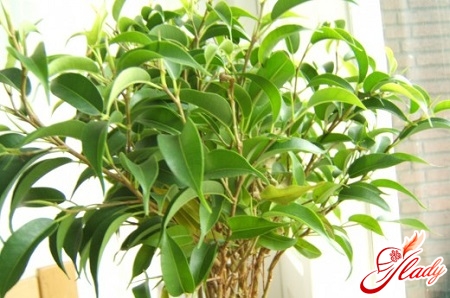
Factors affecting the health of the fig tree of Benjamin
The first reason why Benjamin Ficuscan dump leaves, is the natural aging. Each leaf of this plant lives about three years, after which it turns yellow and falls off. But the process of updating the crown is usually not sharp and massive: from time to time one-two or three old lower leaves give way to new ones. However, if a lot of greens turn yellow or the "baldness" of the trunk suddenly occurs, this is a signal to action! What to do? Carry out a thorough visual inspection of the plant. Identify the yellowing of the leaves: the green color has lost the entire leaf or just its tip, and maybe there are brown spots, leaves curl or just dry? And which side is more yellowness? Look under the leaves - perhaps the cause of the disease are insect pests. Pay attention to the state of the soil: does not smell of rot or, perhaps, dried roots? The more scrupulously you examine the ficus of Benjamin, the more accurate your diagnosis will be, and hence the treatment will be chosen more correctly. Here's how different factors influence the health of your green pet:
- Lighting
Pale or yellow, and then the leaves fall offshadow side? So your plant does not have enough sun. Place the pot closer to the window or add artificial lighting. The appearance of brown spots with the subsequent yellowing of the leaf from the side of the light source, most likely indicates that the ficus was sunburned. Shade the solar window or move the pot from the tree a certain distance from it.
- Temperature
It also happens that the leaves of the ficus wither andtwist - this happens at a low content temperature. Or maybe your pot is too tight to the winter cold window or standing at the open window. In this case, the treatment will be obvious - increase the air temperature and do not put the plant in the way of a draft. Due to sudden temperature changes or unexpected changes in illumination (for example, in the spring you immediately put the ficus on the balcony), small watery yellow spots form on the leaves, which lead to the death of the entire leaf, and in case of neglected cases, the entire ficus. To teach the Benjamin ficus to the changes in conditions should be gradual, taking out to fresh air for two to three hours during the week. In the same way, in the autumn, gradual adaptation to room content is needed.
- Humidity
With insufficient moisture, the leaves of the ficusBenjamin can fall unexpectedly quickly. And the reaction of the plant may be overdue, that is, the fact of low humidity has already been corrected, and the leaves can still fall off. For such cases, it is not superfluous to have a home humidity indicator. The presence of brown leaf tips also indicates excessive dryness of the air. To increase the humidity, it is recommended to use an air humidifier or put a pot on a pallet with wet claydite, and also do not forget to spray the ficus from the spray gun.
- Watering
Excessive watering of the plant is extremely negativeaffects the general state of the ficus. This is evidenced by the appearance of dark spots on the leaves and a putrid smell emanating from the soil. With a constant stagnation of water, the root system decays, and it is unlikely that the ficus will be saved. To prevent negative consequences, reduce watering and stop spraying the leaves. Remember that the soil must dry before each watering. And use warm water for irrigation, cold water will cause a drop in temperature, and leaves can fall.
- Fertilizer
The general state of the ficus is satisfactory, andnew shoots thin, leaves grow small. Why? Unfortunately, your plant either lacks light, or lacks food. In this case, the treatment consists in increasing the illumination or additional fertilization of the ficus with mineral additives.
- Transfer
If the stem began to be bare and the leaves yellow,pay attention to the size of the pot and the replacement of the old soil. Perhaps, the roots of the ficus are no longer placed in the "dwelling" and even stick out of the drainage hole. Choose a slightly larger capacity and replace the soil.
- Pests
Pests that attack the ficus are a spider mite,aphids, scabies, mealybug. Basically, pests affect your plant at high temperature and low humidity. Characteristic signs of this scourge is the appearance on the leaf blots of spots, sticky deposits, cobwebs, causing the leaves to turn yellow, wither and fall off. From spider mites and aphids it is easy to get rid of by rubbing and spraying the plant with a soap solution or diluted solution of the Bordeaux liquid. To destroy other pests this will not be enough, additional treatment with insecticides is needed.
- Infections
Unfortunately, Benjamin Ficus is prone tosome infectious and fungal diseases. For example, black fungus may appear. A favorable condition for infection of the plant are sticky pest discharge. Or powdery mildew - it looks like a white coating on the leaves, which during movement is easily separated from the leaf and transferred to another part of the plant. Methods to combat fungal diseases are to remove the affected leaves and to treat the crown with a fungicide solution. Root rot - a bacterial disease, is the result of excessive watering. It is necessary to replace the soil and remove rotten roots. In case of running cases, the ficus is thrown out together with the pot. According to the reviews of most flower lovers, Benjamin Ficus very easily drops leaves. For his discontent, there is usually a general change in the situation - for example, when you were transporting it from the store home or even if you just suddenly turned the pot with the plant the other side to the light. Any stress - and ficus immediately discards even green leaves. Try to take this into account! Love your plant, take care of it and do not worry in vain, and then no illnesses will be terrible to your home tree. And for many years you will be pleased with the beautiful and noble symbol of the capital of Thailand - the magnificent ficus of Benjamin.




